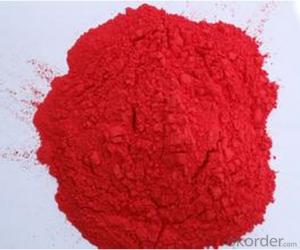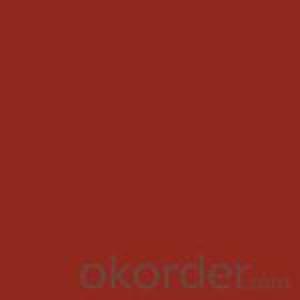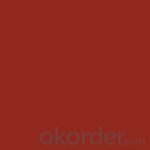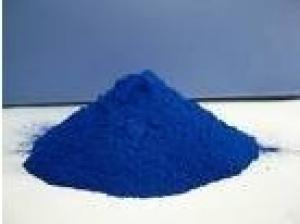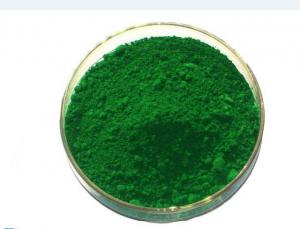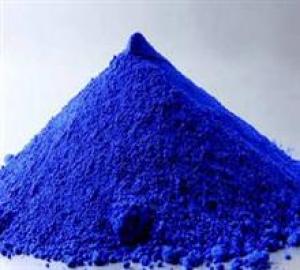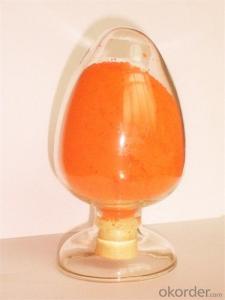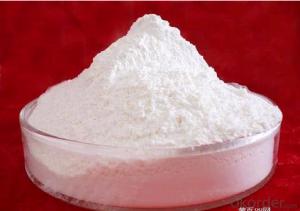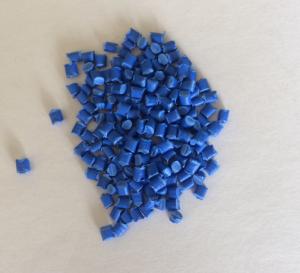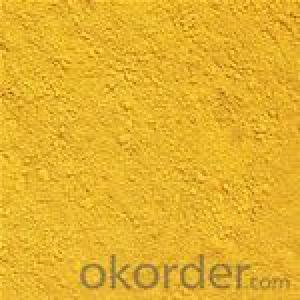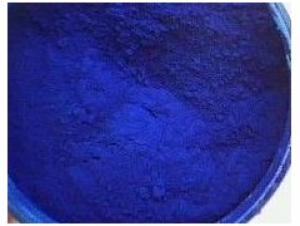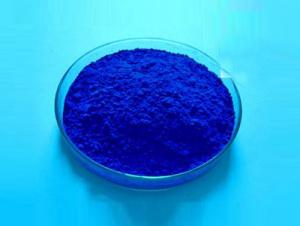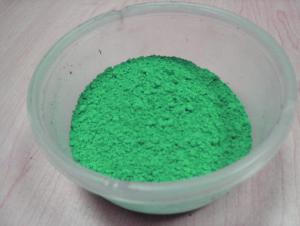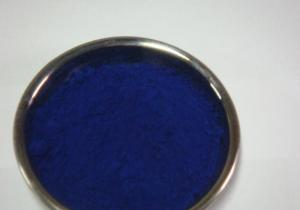Iron Oxide Red 110 from China of best Price
- Loading Port:
- China main port
- Payment Terms:
- TT OR LC
- Min Order Qty:
- 10000 m.t.
- Supply Capability:
- 100000 m.t./month
OKorder Service Pledge
OKorder Financial Service
You Might Also Like
Quick Details
· CAS No.: 1309-37-1
· Other Names: Iron oxide (Fe2O3)
· MF: Fe2O3
· EINECS No.: 215-168-2
· Place of Origin: China (Mainland)
· Usage: Ceramic Pigments, Coating Pigment, Cosmetic Pigment, Ink Pigments, Plastic & Rubber Pigment, Leather Pigments, Other
· Model Number: 110
· Type: Iron Oxide
· Style: Inorganic Pigment
· Appearance: Powder
· color: Iron Oxide Red, Yellow, Black, Blue ,green
· wetherability: very good
· certificate: ISO9001:2000
· heat-resistant: very good
Packaging & Delivery
Packaging Details: | 25 kg/ craft paper bag, 22MT/20FCL (Iron Oxide Red); 25 kg/ craft paper bag, 13 MT/ 20FCL (Iron Oxide Yellow); 25 kg/ craft paper bag, 20MT/ 20FCL (Iron Oxide Black) |
Delivery Detail: | Within 2weeks after get the advanced money |
Specifications
synthetic red iron oxide 110
1 years factory
supply CCIC,ISO,SGS inspect
Free samples will sent to the customer
Iron oxide red 110
1. Product Description
1). Bright-colored exquisite powder.
2). Good weatherability (Lightfastness, heat-resistant and alkali resistant)
3). Strong tinting power, excellent coverage and fine dispersion.
4). We can supply iron oxide with different color, specifications and packing
5). Only dissolved in heat strong acid
2. Product detailed Specification
Item | Index |
Primary color | |
Tint of pigment | |
Iron content (Fe2O3)drying at 105℃%≥ | 96 |
Fineness(325mesh wet sieving residue) %≤ | 0.3 |
Oil absorption g/100g | 15-25 |
Water and 105℃ volatile matter% | 1.0 |
Water soluble matter%≤ | 1.5 |
PH value of aqueous suspension | 4-7 |
Relative tinting strength(standard sample ratio %)≥ | 95 |
PH of water extract ml≤ | 20 |
We also have many of other colors and type, if you have the special request, please email me freely
3. Product Application
brick,concrete, roofing tile, paver, stucco, masonary, paint, coating, rubber, plastic, paper and leather industries etc.
4. Product Packing:
25 kg/ craft paper bag, 22MT/20FCL (Iron Oxide Red);
25 kg/ craft paper bag, 13 MT/ 20’FCL (Iron Oxide Yellow);
25 kg/ craft paper bag, 20MT/ 20’FCL (Iron Oxide Black)
5.superiority
1.accept the inspection of SGS, CCIC and the other international inspection department.
2.Free samples will sent to you.
3.21 years experience.
4.professional skills
FAQ:
1. Q:Are you a manufactory or trading company?
A:We are a professional manufactory with 12 years’ experience and 2 years of export experience, covers an area of 30 acres.
2. Q: May I know your MOQ request?
A:MOQ is 1 TON.
3. Q: Could you offer free sample?
A:We can provide free samples to you for quality testing.
4. Q: Does your product is dangerous merchandise?
A: Not dangerous merchandise, It belongs to Not legal Inspection merchandise.
5. Q: What about your packing?
A: Liquid in IBC tank or Flexitank;Powder in woven bags.
6. Q: How about your productive capacity?
A: 900000 tons/Year.
7. Q: What is your export port?
A: China main port.
8. Q: What is your delivery time?
A: Within 7 days after received advanced payment.
9. Q: Can you print logo or label on packing as customer request?
A: Yes, we can customize according to your requirements.
- Q: Are carontenoids and anythocyanin accesory pigments.
- This Site Might Help You. RE: What are accessory pigments? Are carontenoids and anythocyanin accesory pigments.
- Q: I Need a Bright Colorful High Pigmented Eyeshadow Pallet. i saw some on amazon. but Tehre Out Of stock. :[ Also i need bright colors like realllly bright
- If you want bright colors like that, you should get shimmers or pigments. These are loose eyeshadows that you can pack it on. Many people use a cream base so the eyeshadows can stick onto the skin. If you want something cheap. I know kryolan makes theatrical make up and you can just buy their paint pots. They have the primary colors plus black and white. You will get very vibrant colors if you use cream eyeshadows rather than powder eyeshadows. If you do want to use powder eyeshadows, then you can use a liquid transformer to turn the eyeshadows into liquids so you can paint it onto the skin. Some examples of liquid transformers for cheap would be visine or water. You dip the brush into the liquid transformer and then brush it onto the compact eyeshadows. After that, you just brush it onto the eyelids.
- Q: Please help me answer these Genetics problems. These are the problems that was assigned in the previous exams, but the professor doesn't provide the answer keys or a review session to go over these.Pigment in the mouse is produced only when the C allele is present. Individuals of the cc genotype have no color. if color is present, it may be determined by the A, a alleles. AA or Aa results in the agouti color, while aa results in the black color. In 3 crosses between agouti females whose genotypes are unknowns and males of the aacc genotype, the following phenotypic ratios were obtained. Female 1: 8 agouti 8 colorlessFemale 2: 4 agouti 5 black 10 colorless
- interior the 1st bypass AACC x aacc, discern a million will produce all AC gametes and discern 2 ac. Your F1 will all be AaCc. As all have the C allele they are going to be pigmented and as they're Aa they're going to all be agouti. Your F1 bypass is AaCc x AaCc. each and each discern can produce 4 gametes AC, Ac, aC, ac. To get all the genotypes you would be able to desire to entice a 4 x 4 Punnett sq.. each and each column and each and each row has between the 4 gametes in it and the cells comprise the blended genotypes. in case you count type up your genotypes you will discover 9 comprise the two A and C, those are agouti, 4 comprise cc, and all of those would be white regardless of the genotype at A, 3 comprise aa and C, those will all be black. So your phenotypic ratio would be 9:4:3 agouti: white: black the subsequent 3 crosses are all attempt crosses - you employ a recessive discern to artwork out the genotype of the different discern. a million. As lots of the offspring are colourless, you be attentive to that the two mothers and dads carry the c allele, as you pick cc for colourless mice. As there are no black mice, there is not any a allele interior the mum, as no aa offspring are produced. The bypass is AACc x aacc. woman gametes are AC or Ac and male gametes are all ac, offspring are the two AaCc or Aacc. 2. Is the opposite of bypass a million. There are black offspring so mom would desire to hold an a allele to furnish black mice, as there are no colourless ones, there is not any c allele interior the mum. you could write down the bypass and the F2 effect now. 3. This time all hues are produced, so the mum would desire to hold the two a and c alleles. Her genotype is AaCc, she would be able to offer 4 gametes as interior the 1st bypass and you will artwork out the resultant genotypes and phenotypes interior the F2.
- Q: why light and pigments are different?
- A pigment is a material that changes the color of reflected or transmitted light as the result of wavelength-selective absorption. This physical process differs from fluorescence, phosphorescence, and other forms of luminescence, in which a material emits light. Many materials selectively absorb certain wavelengths of light. Materials that humans have chosen and developed for use as pigments usually have special properties that make them ideal for coloring other materials. A pigment must have a high tinting strength relative to the materials it colors. It must be stable in solid form at ambient temperatures. For industrial applications, as well as in the arts, permanence and stability are desirable properties. Pigments that are not permanent are called fugitive. Fugitive pigments fade over time, or with exposure to light, while some eventually blacken. Pigments are used for coloring paint, ink, plastic, fabric, cosmetics, food and other materials. Most pigments used in manufacturing and the visual arts are dry colourants, usually ground into a fine powder. This powder is added to a vehicle (or binder), a relatively neutral or colorless material that suspends the pigment and gives the paint its adhesion.
- Q: I hear about it cause my Friend is albino and she was born with no pigments in her hair,skin or eyes
- Melanin (i /?m?l?n?n/; Greek: μ?λα?, black) is a pigment that is ubiquitous in nature, being found in most organisms (spiders are one of the few groups in which it has not been detected). In animals melanin pigments are derivatives of the amino acid tyrosine. The most common form of biological melanin is eumelanin, a brown-black polymer of dihydroxyindole carboxylic acids, and their reduced forms. All melanins are derivatives of polyacetylene. The most common melanin – dopamelanin – is a mixed copolymer of polyacetylene, polyaniline, and polypyrrole. Another common form of melanin is pheomelanin, a red-brown polymer of benzothiazine units largely responsible for red hair and freckles. The presence of melanin in the archaea and bacteria kingdoms is an issue of ongoing debate among researchers in the field. The increased production of melanin in human skin is called melanogenesis. Production of melanin is stimulated by DNA damage induced by UVB-radiation,[1] and it leads to a delayed development of a tan. This melanogenesis-based tan takes more time to develop, but it is long lasting.[2] The photochemical properties of melanin make it an excellent photoprotectant. It absorbs harmful UV-radiation and transforms the energy into harmless heat through a process called ultrafast internal conversion. This property enables melanin to dissipate more than 99.9% of the absorbed UV radiation as heat[3] (see photoprotection). This prevents the indirect DNA damage that is responsible for the formation of malignant melanoma and other skin cancers. Albinism (from Latin albus, white; see extended etymology, also called achromia, achromasia, or achromatosis) is a congenital disorder characterized by the complete or partial absence of pigment in the skin, hair and eyes due to absence or defect of an enzyme involved in the production of melanin.
- Q: thinking about the main role of pigments in photosynthesis...? explain how the pigments in colored objects suc?
- photosynthetic pigment or antenna pigment is a pigment that is present in chloroplasts or photosynthetic bacteria and captures the light energy necessary for photosynthesis. Green plants have five closely-related photosynthetic pigments (in order of increasing polarity): Carotene - an orange pigment Xanthophyll - a yellow pigment Chlorophyll a - a blue-green pigment Chlorophyll b - a yellow-green pigment Phaeophytin a[1] - a gray-brown pigment Phaeophytin b[1] - a yellow-brown pigment Chlorophyll a is the most common of the six, present in every plant that performs photosynthesis. The reason that there are so many pigments is that each absorbs light more efficiently in a different part of the spectrum. Chlorophyll a absorbs well at a wavelength of about 400-450 nm and at 650-700 nm; chlorophyll b at 450-500 nm and at 600-650 nm. Xanthophyll absorbs well at 400-530 nm. However, none of the pigments absorbs well in the green-yellow region, which is responsible for the abundant green we see in nature.
- Q: Does anyone know of a way to change the color of your iris' permanently?I've been researching for a while, and have not been able to find anything! I already know about newcoloriris (surgery), but that had loads of side effects. I already know about contacts (ive had them on and off for a while).I don't see how with all the science and technology in the world, there's no way to simply lighten your eye color. We can literally dye our skin, we can tattoo our eyeballs, we can do almost ANYTHING in the world today. So, how has nobody discovered a way to change eye color.?I'm aware that blue/light eyes are a result of low melanin production, But i don't understand how there's no known way to reduce the overproduction of melanin in darker/brown eyed people.It's really frustrating. If anyone knows any websites, doctors, or scientists currently working on a way to do this, please let me know! Or if you know of a new way someone has come up with, please let me know!lt;3 THANKSSSS
- Why in heavens name would you want to do this? The best, and safest way is with colored contact lenses. Don't even entertain the idea of surgery. This is your sight! And yes, though we may change the colour of other parts of our body, consider this - how dangerous and abnormal it is to do so! You probably have very beautiful eyes and don't realize it.
- Q: What happens to the yellow pigments in a leaf during the summer months?
- Carotenes and xanthophylls are always present in the leaves of plants. During the summer, the abundant chlorophyll masks the presence of the yellows, oranges, and reds that are also present. These other pigments are called accessory pigments and also absorb light energy used in photosynthesis.
Send your message to us
Iron Oxide Red 110 from China of best Price
- Loading Port:
- China main port
- Payment Terms:
- TT OR LC
- Min Order Qty:
- 10000 m.t.
- Supply Capability:
- 100000 m.t./month
OKorder Service Pledge
OKorder Financial Service
Similar products
Hot products
Hot Searches
Related keywords
